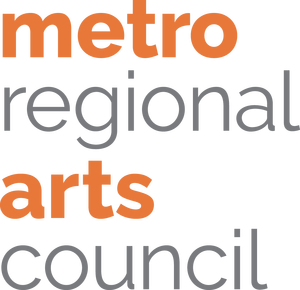We are excited to announce that we received an MRAC Arts Activities Grant for a documentary film project that will feature multi-generational stories of the Little Earth Native American community in South Minneapolis, MN, co-produced by three paid Little Earth student interns. The working title is “Little Earth: Pride of the People Overcoming Pain of the Past.” The documentary will highlight the pride of the community, while attempting to break down negative stereotypes of what it means to be Native American. The film will reveal the humanity of the community, sharing both the challenges and the joys, seeking reconciliation for our city, our nation, and leaving an imprint of hope for generations to come.
The film is a collaboration between three partners: Little Earth’s Youth Development Center (YDC) and TJ Valtierra (Red Lake Ojibwe) who is an Urban Youth Worker in the Little Earth Community, Josh and Morgan Chitwood of Chitwood Media, and Inverted Arts. The film will be in production from Winter – Summer 2019, screened for the Little Earth Community and at the Pow Wow Grounds Art Gallery in fall 2019 and at other Twin Cities venues including the Inverted Arts Studios and Sanctuary Covenant Church in N. Minneapolis in early 2020. The film will be submitted to the MSP International Film Festival, the Twin Cities Film Fest, the American Indian Film Institute, and the Red Nation Film Festival. After the screenings and festivals the film will be released to the public on Vimeo, Youtube, and other social media platforms.
Little Earth History

Little Earth is a 9.4-acre, 212-unit HUD-subsidized housing complex in the urban industrial core of Minneapolis, Minnesota. It is home to nearly 1,000 residents, 500 of whom are under the age of 21. Founded in 1973, Little Earth is the only American Indian preference project-based Section 8 rental assistance community in the United States. Little Earth has been a center for American Indian support since its inception, and been recognized as a leader and innovator in providing services to the American Indian community in South Minneapolis in the form of highly rated educational and social programs, pre-school partnerships, Hennepin County services through our Omniciye program, elders services, health initiatives and cultural programming. Within 3 years of opening, the Little Earth development fell victim to a number of financial and managerial problems, most the result of substandard construction of the original units.
In 1975, these difficulties led to a restructuring of Little Earth’s management, and the creation of a new governing Board of Directors comprised of prominent American Indian leaders from established organizations in the region. The new board incorporated itself as Little Earth of United Tribes and selected the American Indian Movement (AIM) to manage the property.
Little Earth continued to struggle for survival throughout the 1980’s, and by 1990 the development was once again facing severe financial hurdles. In many ways, the sense of purpose that was developed in the community over the years, the dedication of the Little Earth Residents Association, the support of local social service organizations and the cooperation of the City of Minneapolis showed the federal and state government that Little Earth was worth preserving. With the help of a new administration in Washington, the community reorganized itself again in 1994. The new leadership at Little Earth worked tirelessly through the late 1990s to restructure the community’s finances, improve the units and grounds, and to develop new educational and social service programs catering to the needs of Little Earth residents. Today, Little Earth has become a reservoir of political and community organizing on a variety of environmental and social justice issues and a model of self-determination for all Native people.
Recent History

Over the past six years, several community-wide, holistic initiatives and programs have been put into place to turn the tide on destructive trends and create hope. Crime has lowered by 60% in the wake of the increased safety. As a result, children, parents and grandparents have opened their doors–literally–to opportunities available to them as residents of the community. They have reclaimed the adjacent city park for recreation and cultural events for the entire community. At the same time, the number of new services and residents accessing those services are on the rise–from expanded school success activities for youth and new early childhood education programs to having on-site Hennepin County support services for families. Extensive drug and sobriety programs and well developed preschool, youth programs, and community programs have blossomed at Little Earth.
“This activity is made possible by the voters of Minnesota through a grant from the Metropolitan Regional Arts Council, thanks to a legislative appropriation from the arts and cultural heritage fund.”
